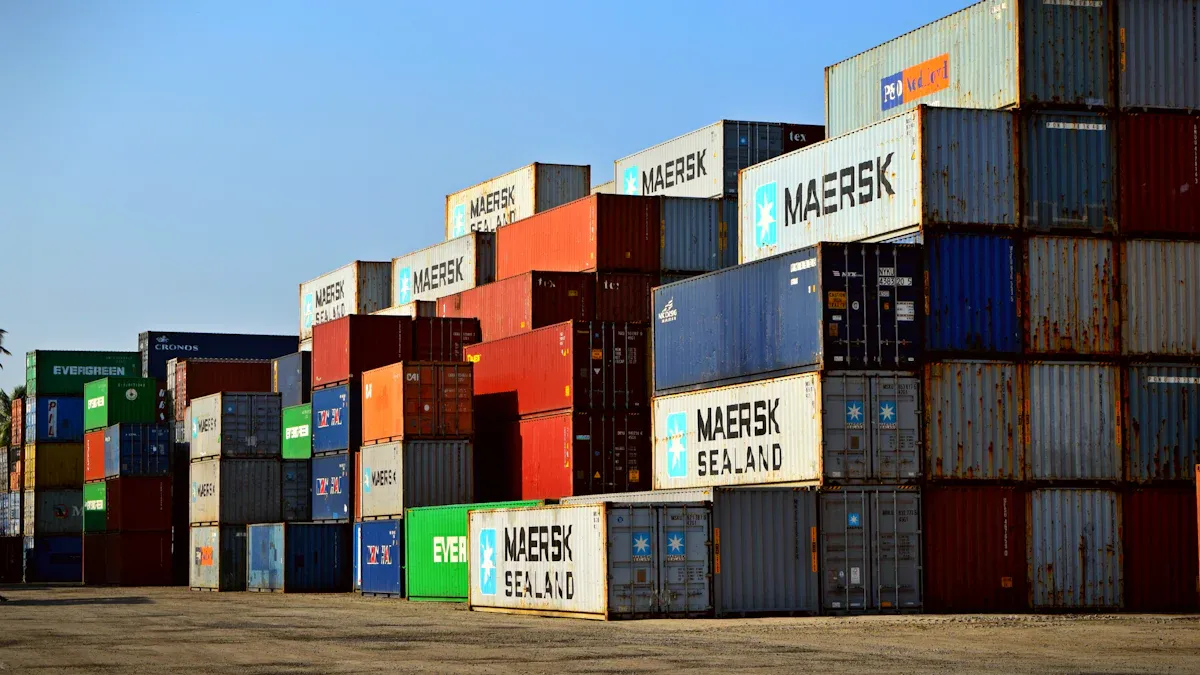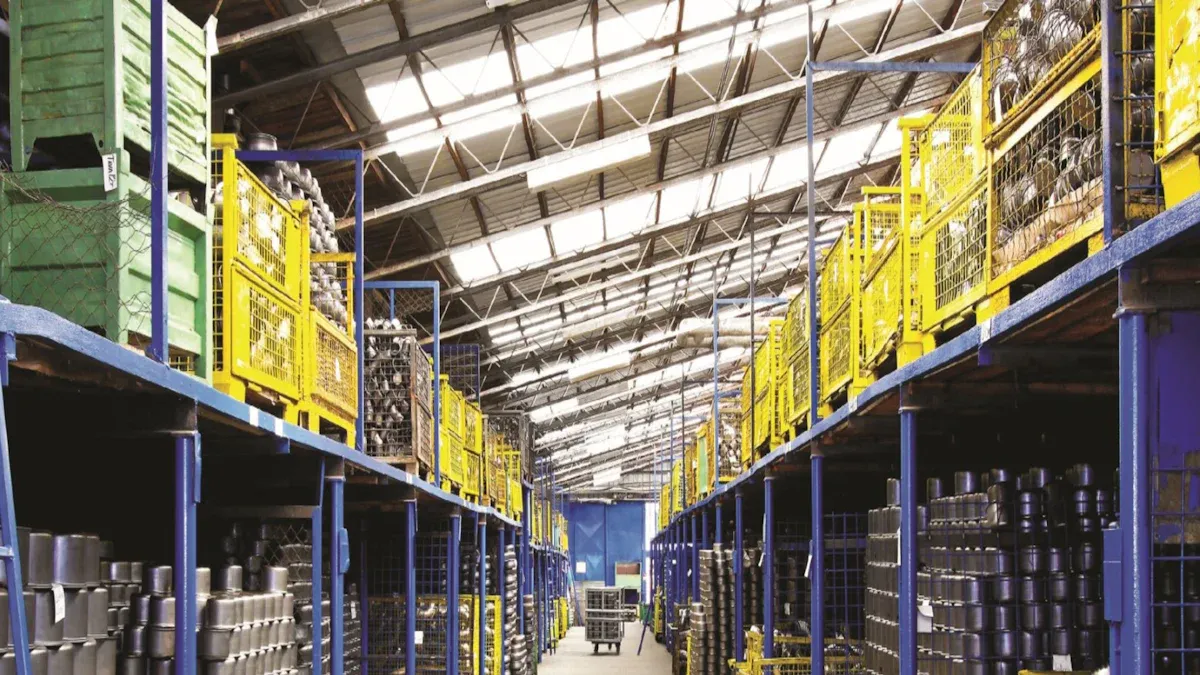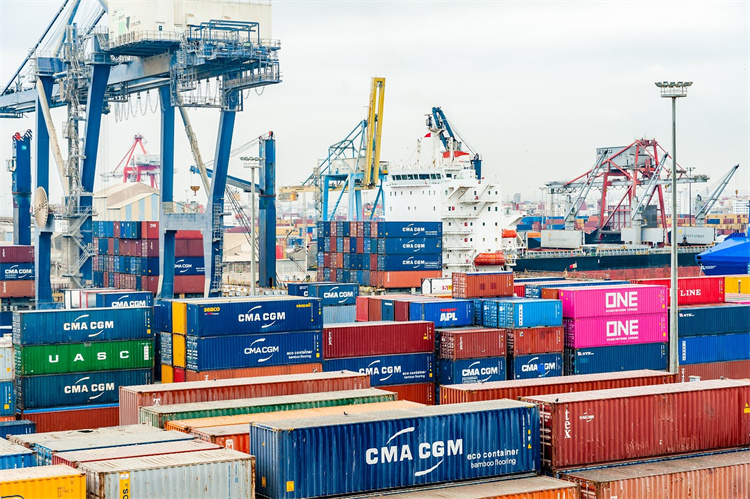What is Lean Logistics Planning and How It Benefits Supply Chains

Lean Logistics Planning is a strategy that helps you manage logistics by reducing waste, optimizing processes, and delivering value to customers. It focuses on identifying inefficiencies like unnecessary motion, inventory, or transportation. For instance, walking 100 feet to retrieve parts multiple times daily can add up to 170 miles annually. By addressing such inefficiencies, you can save time and energy while improving customer satisfaction. This approach emphasizes continuous monitoring and improvement using techniques like Statistical Process Control (SPC), ensuring better performance outcomes and streamlined operations.
Key Takeaways
Lean Logistics Planning cuts waste and improves steps, saving money and making customers happier.
Using value stream mapping shows logistics steps, finds problems, and boosts how things work.
Always improving creates a habit of bettering things, keeping your supply chain fast and flexible.
Just-in-time inventory keeps less stock, lowers storage costs, and matches inventory to what is needed.
Using technology and machines makes work faster and more accurate, helping solve supply chain problems quickly.
Core Principles of Lean Logistics Planning

Lean Logistics Planning revolves around three core principles: waste reduction, value stream mapping, and continuous improvement. These principles work together to streamline operations, reduce inefficiencies, and enhance supply chain performance.
Waste Reduction
Waste reduction is at the heart of Lean Logistics Planning. It focuses on eliminating activities that do not add value to your supply chain. These activities, often referred to as "waste," can include excessive inventory, unnecessary transportation, or overproduction. By identifying and removing these inefficiencies, you can save time, reduce costs, and improve overall productivity.
For example, in agriculture, waste reduction techniques have significantly enhanced logistics efficiency:
Technology like AI and precision farming optimizes inventory management and reduces food waste.
Real-time tracking systems help monitor produce, minimizing spoilage.
Data analytics allows farmers to predict crop yields and resource needs, cutting down on unnecessary resource use.
These methods not only improve financial stability but also contribute to environmental sustainability by reducing greenhouse gas emissions.
Value Stream Mapping
Value stream mapping (VSM) is a powerful tool that helps you visualize and analyze the flow of materials and information within your supply chain. It allows you to identify bottlenecks, redundancies, and areas for improvement. By mapping out each step in your logistics process, you can pinpoint where value is added and where waste occurs.
Organizations that have implemented value stream mapping have reported measurable improvements:
Improvement Type | Measurable Change |
|---|---|
Productivity Increase | |
Waste Reduction | -50% in waiting times |
On-Time Delivery | Improved to over 95% |
These results demonstrate how VSM can lead to more efficient operations and better customer satisfaction.
Continuous Improvement
Continuous improvement, or "Kaizen," is a principle that encourages you to make small, incremental changes to your logistics processes. This approach ensures that your supply chain remains adaptable and efficient over time. Instead of waiting for major overhauls, you can focus on ongoing enhancements that yield long-term benefits.
Quantitative data highlights the impact of continuous improvement in lean logistics environments:
Examples of Indicators | |
|---|---|
Safety | Frequency rate, Severity rate, Frequency index |
Cost | Production cost per unit, Labor cost per product |
Product Quality | First-pass yield rate, Rejection rate, Scrap rate |
Overall Equipment Efficiency | Equipment availability, Equipment performance, Equipment quality |
Time Savings | Production cycle time, Inventory turnover time |
Customer Satisfaction | Customer satisfaction rate, Net Promoter Score (NPS) |
Return on Investment (ROI) | Customer acquisition cost, Customer lifetime value |
Employee Satisfaction | Employee turnover rate, Employee engagement rate |
By fostering a culture of continuous improvement, you can achieve better safety, lower costs, higher product quality, and greater customer satisfaction.
Lean Logistics vs. Traditional Logistics
Key Differences in Approach
Lean logistics and traditional logistics differ significantly in their operational focus and metrics. Traditional logistics often prioritizes maximizing throughput and minimizing cycle time. It measures success using metrics like:
Throughput
Cycle time
Cost per unit shipped
In contrast, lean logistics emphasizes efficiency and waste reduction. It focuses on metrics such as:
Inventory turns
Lead times
Defect rates
Operational efficiency
Waste reduction
Traditional logistics tends to rely on bulk inventory storage to meet demand, which can lead to overstocking and higher storage costs. Lean logistics, however, adopts a just-in-time approach, ensuring inventory levels align closely with actual demand. This minimizes excess inventory and reduces the risk of obsolescence. By focusing on continuous improvement, lean logistics creates a more agile and responsive supply chain.
Advantages of Lean Logistics Over Traditional Methods
Adopting lean logistics offers several advantages over traditional methods. First, it minimizes inventory risk by reducing downtime and the need for large storage spaces. This approach lowers costs associated with warehousing and frees up cash for other business needs. For example, lean logistics ensures minimal inventory storage, improving cash flow and reducing capital investment requirements.
Lean logistics also enhances operational efficiency. By cutting unnecessary activities and optimizing processes, you can produce goods and fulfill orders faster. This streamlined approach not only saves time but also improves customer satisfaction. Customers benefit from quicker deliveries and higher-quality products, which strengthens their trust in your business.
Additionally, lean logistics fosters a culture of continuous improvement. It establishes a framework for ongoing process optimization, ensuring your supply chain remains competitive and adaptable. Over time, this cycle of improvement leads to better resource utilization, lower costs, and happier customers.
By shifting from traditional logistics to lean logistics planning, you can achieve a more efficient, cost-effective, and customer-focused supply chain.
Implementing Lean Logistics Planning
Just-in-Time Inventory Management
Just-in-Time (JIT) inventory management ensures that you receive goods only when needed, reducing excess stock and storage costs. This approach relies on accurate demand forecasting and strong supplier relationships. By aligning inventory procurement with customer demand, you can minimize waste and improve cash flow.
For example, companies like Amazon and Walmart have successfully implemented JIT systems:
Amazon: Streamlined fulfillment center operations to reduce labor and transportation costs.
Walmart: Leveraged advanced inventory management and data analytics to cut carrying costs and avoid stockouts.
In healthcare, JIT inventory management has proven effective in reducing operational costs and enhancing supply chain resilience. Lessons from the COVID-19 pandemic highlight the importance of reliable suppliers and precise forecasting for future improvements.
Leveraging Technology and Automation
Technology and automation play a crucial role in optimizing Lean Logistics Planning. Tools like AI, IoT, and Warehouse Management Systems (WMS) enhance efficiency and reduce errors.
AI and Machine Learning: Predictive analytics help you forecast demand and optimize delivery routes.
IoT: Real-time tracking improves visibility and asset management.
WMS: Streamlines operations and integrates with automation for faster processing.
Automation tools, such as RFID material tracking and automated order processing systems, improve inventory accuracy and reduce unnecessary purchases. These technologies enable quicker responses to supply chain challenges, lower operational costs, and enhance customer satisfaction.
Employee Training and Engagement
Your employees are the backbone of Lean Logistics Planning. Training them to understand lean principles ensures they can identify inefficiencies and suggest improvements. Engaged employees contribute to a culture of continuous improvement, which is vital for long-term success.
Consider implementing regular workshops and hands-on training sessions. These activities help employees stay updated on new technologies and processes. When employees feel empowered, they take ownership of their roles, leading to better collaboration and higher productivity.
Tip: Recognize and reward employees who contribute innovative ideas to improve logistics processes. This boosts morale and encourages active participation in lean initiatives.
Benefits of Lean Logistics Planning for Supply Chains

Cost Reduction
Lean Logistics Planning helps you cut costs by eliminating waste and optimizing resource use. By reducing excess inventory, you avoid unnecessary storage expenses and free up capital for other priorities. For example, adopting just-in-time inventory management ensures you only store what you need, minimizing the risk of overstocking or obsolescence.
Additionally, streamlining transportation routes lowers fuel consumption and reduces shipping costs. Advanced technologies like route optimization software can help you identify the most efficient paths for deliveries. This not only saves money but also reduces your environmental footprint.
In manufacturing, companies like Toyota have achieved remarkable cost savings through Lean Logistics Planning. Toyota reduced production costs by 30% while cutting production time in half. These results highlight how lean practices can transform your supply chain into a more cost-effective operation.
Improved Operational Efficiency
Lean Logistics Planning enhances operational efficiency by focusing on process optimization and waste elimination. When you identify and remove bottlenecks, your supply chain becomes more agile and responsive. This allows you to meet customer demands faster and with fewer errors.
For instance, value stream mapping helps you visualize inefficiencies and streamline workflows. By implementing this tool, organizations across industries have reported significant improvements. Consider these examples:
Industry | Company/Organization | Improvement Metrics |
|---|---|---|
Manufacturing | Toyota | |
Healthcare | Virginia Mason Medical Center | 50% reduction in wait times, 24% increase in patients seen, 95% patient satisfaction |
Technology | Intel | 20% reduction in cycle times, $500 million annual savings |
These case studies demonstrate how Lean Logistics Planning can drive measurable gains in efficiency. Whether you're in manufacturing, healthcare, or technology, adopting lean practices ensures smoother operations and better resource utilization.
Enhanced Customer Satisfaction
When you implement Lean Logistics Planning, you improve your ability to meet customer expectations. Faster delivery times, higher product quality, and fewer errors all contribute to a better customer experience. For example, by reducing lead times and optimizing inventory levels, you can ensure that products are always available when customers need them.
Lean practices also allow you to respond quickly to changes in demand. This flexibility builds trust with your customers, as they know they can rely on you for timely and accurate service. In healthcare, Virginia Mason Medical Center achieved a 95% patient satisfaction rate by reducing wait times and increasing efficiency. This shows how lean principles can directly enhance customer experiences.
Moreover, by cutting costs and improving efficiency, you can offer competitive pricing without sacrificing quality. Customers appreciate value, and Lean Logistics Planning enables you to deliver it consistently.
Lean logistics planning plays a vital role in optimizing supply chain performance. It helps you reduce costs, improve efficiency, and deliver better customer experiences. Companies across industries have achieved remarkable results by adopting lean practices.
Industry | Company | Key Improvements |
|---|---|---|
Retail | Walmart | |
Logistics | DHL | 200% boost in picking productivity, 40% fewer errors |
E-commerce | Amazon | 30% faster picking times with advanced WMS |
By embracing lean logistics, you can stay competitive, adapt to market demands, and build a more sustainable supply chain.
FAQ
What is the main goal of Lean Logistics Planning?
Lean Logistics Planning aims to reduce waste and optimize processes in your supply chain. It focuses on delivering maximum value to customers while minimizing inefficiencies like excess inventory, unnecessary transportation, or delays.
How does Lean Logistics differ from traditional logistics?
Lean Logistics emphasizes efficiency and waste reduction, while traditional logistics prioritizes throughput and cycle time. Lean methods use tools like just-in-time inventory and value stream mapping to streamline operations and improve responsiveness.
Can small businesses benefit from Lean Logistics Planning?
Yes, small businesses can benefit greatly. Lean practices help you save costs, improve efficiency, and enhance customer satisfaction. By adopting simple tools like value stream mapping, you can identify inefficiencies and make impactful changes without large investments.
What role does technology play in Lean Logistics?
Technology enhances Lean Logistics by automating processes and improving accuracy. Tools like AI, IoT, and Warehouse Management Systems help you forecast demand, track inventory, and optimize delivery routes, making your supply chain more efficient.
How can you start implementing Lean Logistics Planning?
Begin by identifying inefficiencies in your supply chain. Use tools like value stream mapping to visualize processes. Focus on just-in-time inventory management and train employees to adopt lean principles. Start small and scale improvements over time.
Tip: Regularly review your processes to ensure continuous improvement and adaptability.
See Also
Mastering Lean Logistics For Success In Tech Manufacturing
Unlocking Logistics Savings: Tips For Supply Chain Optimization
Transforming Logistics Through Innovative Supply Chain Strategies
The Importance Of Logistics Security In Supply Chain Management
